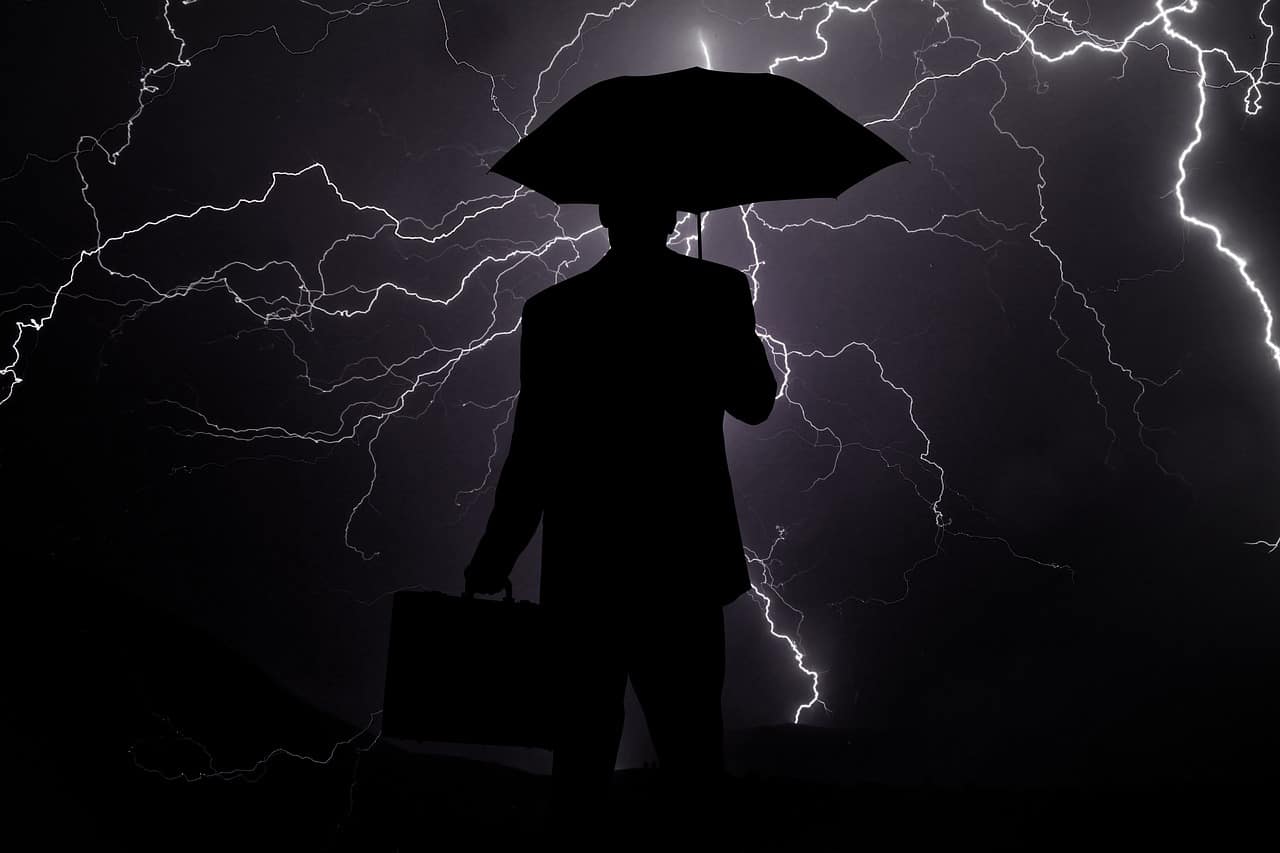As a business owner, the great lockdown has probably forced you to learn very hard lessons.
Unexpected situations such as the Covid-19 pandemic can literally catch you off-guard, and you need to be prepared.
However, even if everyone tells you to expect the unexpected, it can be difficult to fully grasp that and be ready for whatever the future holds for your business.
After all, no one likes to think about what could go wrong.
But the reality is that if you don’t plan for the worst, your business will probably spiral down to the entrepreneurial Valley of Death.
Ask yourself, what would you do if you lost a key client or one of your suppliers suddenly went out of business?
Would you be able to keep your business afloat if the rug was suddenly pulled out from beneath you?
Recovering from a crisis can be expensive and time-consuming, so a good rule of thumb is to think ahead and plan for the unexpected.
This post will cover some of the unforeseen events that may impact your business and a few considerations that can help you get back into the game.
Table of contents:
1. What Could Happen to Your Business?

No matter what kind of business you’re running, unexpected events can occur when you least expect them to – especially because you can’t prevent natural disasters from happening.
That’s why before building a contingency plan, you should take a moment to think about what could go wrong.
For example, in 2011, catastrophic floods in Thailand disrupted production for major automakers, including Honda, Toyota and Nissan and affected hundreds of manufacturers.
It is therefore crucial to be prepared for what you would do if an unexpected event sent your entire business into a tailspin.
Here are the worst-case scenarios to think about:
- Natural disasters – Consider what would happen to your business in the event of a flood, hurricane, tornado, earthquake or fire.
- Theft – Data theft occurs when sensitive information is stolen by someone who hacked into a computer system.
- Equipment failure – Not only does equipment failure involve lost profit but it also involves the cost of the equipment repair and money lost during downtime.
- Loss of a key person – If a key person such as a business partner becomes unable to work or dies, your business might be temporarily unable to operate.
- Crisis – Unforeseen crises may include acts of war, terrorist attacks, riots, labour strikes, or lockdowns.
- Reputational disaster – Scandals and reputational crises cause serious damage to your business’s reputation.
- Financial crisis – A financial disaster can be caused by either internal factors such as poor cash flow management or external factors such as a speculative bubble or stock market crash.
- Lawsuit – Lawsuits can be filed by suppliers, clients, employees or even other businesses. Whether you win or lose, a lawsuit can cost your business heaps of money.
That said, let’s look at some proactive steps to take to prepare for the unexpected and protect your business from a worst-case scenario.
2. How to Prepare Your Business for Worst-Case Scenarios

Creating a business contingency plan may seem overwhelming but trying to wing it when the unexpected happens is far worse.
Here is how to prepare your business for any challenges it may face:
1. Carry out a risk assessment
To prepare your business for unexpected events, the first step you need to take is to carry out a risk assessment so you can decide on suitable control measures.
This will help you recognise any possible threats and know how to tackle them head-on.
Consider the following questions:
- What happens if a key person leaves, gets sick or even passes away?
- What if your team becomes unhappy?
- What happens if essential tools, equipment or vehicles break or fail?
- Are you located in an earthquake or hurricane zone or an area susceptible to fires or floods? What happens if a weather event affects your location?
- Are you able to handle supply chain shortages?
- What if you run out of funds or get caught in a debt spiral?
- What if you lose a client who makes up much of your income?
- What if you get sued?
- Can you recover from a string of negative reviews?
- What do you do if a new product or service doesn’t find enough buyers?
- What if your growth plans go wrong and your business expansion fails?
- What if new competitors enter your space?
Once you’ve drawn up a list of potential threats and evaluated the risk associated with that event, the next step is determining the risk likelihood.
Consider all the possible impacts on your business and create a plan based on each risk’s likelihood (e.g., low, medium, high) and threat.
2. Back up your data
As businesses become increasingly digitised, it is critical that you put a data backup strategy in place to protect all your business information.
Data backup means making copies of your data and adding them to a secondary and even tertiary location to prevent data loss.
Whether it’s a natural disaster, a regional power outage, a computer hard drive crash, ransomware or hackers, making sure that your valuable digital assets are properly backed up is critical.
Luckily, cloud technologies offer affordable solutions to help you protect your trade secrets and customer database.
Be sure to set specific guidelines on how frequently data should be backed up and which files are most critical.

3. Keep your business flexible and agile
Business agility refers to the ability to be more responsive to change and deliver value to a market characterised by ever-increasing uncertainty.
From an operational standpoint, the Covid-19 pandemic taught businesses that staying agile and flexible allows them to generate results even at a time of unforeseen circumstances.
For example, businesses that adopted a remote-first culture when the pandemic struck were able to ensure their continued operations while also saving money on overhead.
So ask yourself, do you really need a physical office?
Would you be able to quickly respond to changes in customer requirements and business circumstances when you’re locked into a long-term lease?
What would you do tomorrow if your physical office space was shut down?
To accomplish true agility and better equip yourself with viable market opportunities, it’s time to ditch the physical office and go remote.
Not to mention that going remotely means finding the best, not the closest, team member, which is critical in a competitive market.
You might be thinking, “This sounds like a lot of work!”
While it’s fair for you to think that, switching to a virtual office and implementing a remote work strategy will pay off in the long run.
Not only does a virtual office enable you to stay agile and better prepare for unexpected events, but it also helps you to save heaps of money on overhead – all while providing you with the same quality services as a brick-and-mortar office.
4. Create an emergency fund
Every business must hold cash reserves to help them survive tough times.
I previously wrote a short guide on how to build a rainy day fund for your business.
There are many reasons why cash reserves are a matter of survival in times of escalating uncertainty.
Despite that, many small businesses don’t hold enough cash reserves to draw upon during adverse times.
For example, the market intelligence company CB Insights broke down the top reasons for startup failure by analysing 110 failed startups.
It turned out that running out of cash is the most common reason why startups fail, impacting 38% of failed businesses.
And in a Federal Reserve survey on small businesses, 17% of business owners said they would be forced to close down if they experienced a drop in revenues for a two-month period.
Here are the most important reasons why your business will immensely benefit from an emergency fund:
- While you may have insurance to cover damages caused by natural disasters, it takes time to process a claim. Having cash reserves available ensures that you can quickly get your business back on track.
- In case of an economic downturn, cash reserves allow you to cover payroll, order supplies and ensure mission-critical operations proceed.
- When unexpected emergencies come up, having cash on hand ensures that you avoid missing a credit card or loan payment so you can maintain your business credit score.
5. Create multiple revenue streams
When disaster strikes, you should be flexible enough to embrace change and be willing to modify your business plans so you can forge ahead.
For instance, when the Covid-19 pandemic hit, some businesses had no choice but to diversify their revenue streams when restrictions and quarantines made their initial plans go awry.
Think – When business is booming, revenue is flowing in and everything is humming like a well-oiled machine, it’s easy to become complacent.
You begin to rely on that revenue stream. After all, what could possibly go wrong?
Well, everything.
Having one revenue stream is like playing the lottery.
All it takes is one unexpected event and that revenue stream goes dry.
That’s why creating multiple revenue streams will protect your business’s future.
It’s like the phrase “don’t put all your eggs in one basket”.
Unexpected circumstances won’t take you by surprise if you have another revenue stream able to carry the business, at least temporarily.
For example, you can create a subscription-based service for your products to develop a new source of income.
Or, you can offer online courses and workshops. Or, you may want to expand sales by embracing digital space.
No matter how you choose to diversify your revenue streams, you can rest assured that this strategy will enable you to better manage challenges and insulate yourself from seasonal ups and downs.

Conclusion: As the old saying goes, “nothing is so certain as the unexpected”.
As the pandemic painfully illustrated, something unexpected that turns your business upside down can always happen.
That’s why you need to be prepared operationally and financially and make yourself better equipped to deal with worst-case scenarios.
By taking these 5 steps, you, your team members and your business will be able to tackle challenges and minimise downtime – allowing you to get back on track.
Looking for flexible office space that gives your business the agility it needs to plan and respond to the unexpected? Have a look at our website and find the virtual office package that best fits your needs. Feel free to contact B2B HQ anytime – Whatever your question, our team of experts are on hand to help.
